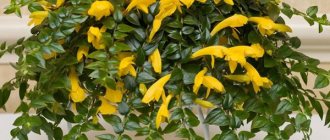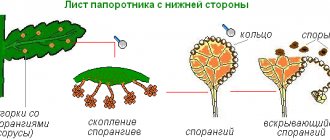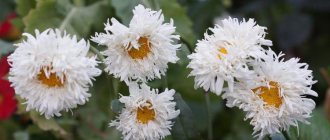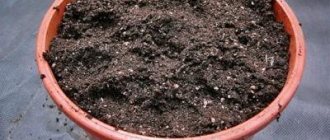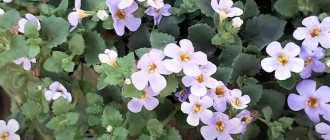Is it possible to keep a fern at home?
There are many signs and superstitions associated with this mysterious plant. This plant is surrounded by mystery and mystery. According to legends, it is believed that if someone sees one of the types of ferns blooming in the forest, then such a person will live a long and happy life. Is this really so, and why are there so many legends around this flower?
Caring for Popular Fern Varieties
Signs and superstitions about ferns
Signs say that if an indoor fern grows in a house, then its owner will have great luck and may find a treasure. Also, according to superstitions, owners of indoor ferns are guaranteed:
- harmony in family relationships;
- finding a common language between different generations;
- monetary wealth and financial well-being.
- protection from evil spirits.
It is necessary to carry out proper care for different types of ferns so that the fronds (leaves) do not begin to fall off
But in addition to good signs, there are also negative ones:
- a fern in the house is an energy vampire and takes away strength from household members;
- owners of this plant often have headaches;
- fern brings misfortune.
Attention: ferns in the house can cause constant headaches in the morning, as they absorb large amounts of oxygen. It is not recommended to place it in the bedroom. This plant can also adversely affect allergy sufferers.
Homeland and country of origin of the first ancient land species
All wild ferns come from the forests of the tropics and subtropics: some species are found only in the equatorial parts of North and South America, others in Africa, others in oceanic islands, and others in any of these territories.
What they have in common is that they grow mainly in humid natural forests.
Indoor fern varieties: what are they, description and photo
It would seem that all ferns are the same. But in fact, there are more than 10 thousand different types of them. Let's look at popular types with names and photos of this plant that are suitable for growing indoors:
- Nephrolepis. The botanical name of the genus was Nephrolepis exaltata. A plant that has 30 species. Ideal for breeding at home. Grows almost 2 meters in length. An unpretentious plant.
- Pelley. The genus got its name from the Greek word “pellos” - “dark”, which characterizes the color of the stems of Pellaea leaves. It is characterized by the unusual color of the dark green plates. According to the types of pellea, it is divided into pellea spear-shaped and pellea rotundifolia. The plant of the leaf family loves high humidity. Therefore, watering must be done frequently. If you overdo it, the foliage becomes brown or black and begins to crumble a lot.
- Polydomium (centipede). The genus got its name from Perunov's color. Rarely grown at home. Popular types of polydomium golden, pimply. Plants are watered frequently.
- Pteris Cretan, Latin name Pteris cretica. One of the types of fern. It comes with curly, sword-shaped green leaves, which are easy to care for.
One of the fern species is the Asplenium variety. This is a decorative deciduous crop that is popular with many gardeners. Asplenium feels great in open ground, even at home. With proper care, the asplenium bush and crown will often grow dense and quite large. Asplenium foliage is bright green and can be pinnately dissected or simple.
Interesting: In nature there is a fern called “Deer Horn”. This beautiful ornamental perennial plant grows on the Asia-Australia side. Deer Antler reproduces by lateral shoots, vegetatively. The leaves of this plant form a large rosette that opens very slowly.
Where is the best place to put a plant at home?
The fern can be placed in any room except the nursery and bedroom. This is due to the fact that at night the plant releases carbon dioxide, which can lead to headaches in the morning. This applies to any variety.
Nephrolepis leaves are called fronds. Nephrolepis has more than 30 leaf species.
In general, any type of fern in the house:
- absorbs toxins;
- humidifies the air;
- absorbs radiation from household appliances.
Nephrolepis in the kitchen: if the habitat is very humid, nephrolepis is more comfortable
Therefore, one of its types should be placed next to household appliances. But the plant cannot be placed in direct sunlight or in drafts. There is also no need to move the plant several times.
The height of a green, actively growing plant reaches half a meter or more
Diseases and pests, methods of control
If agricultural practices are violated, the fern may be attacked by pests:
- nematode;
- scale insect;
- thrips;
- aphid.
Treatment with a soapy solution and bathing in a warm shower will help in the fight against pests.
In advanced cases, it is better to resort to insecticides:
- Aktara;
- Karbofos;
- Actellik.
How to care for ferns at home
To create favorable conditions for keeping one of the types of indoor ferns, you need to take care of: lighting of the plant, air temperature, and conditions of keeping. Let's take a closer look at how to care for ferns, as well as their green varieties.
Lighting
The fern thrives in the shade. The plant should not be placed in direct sunlight. Sunlight must be diffused. To do this, it is recommended to adjust the blinds on the windows in such a way as to reduce a large amount of light. It is best to place the plant on a north window, as south and east windows let in too much light, which the fern does not like. If the plant is rearranged many times, this will also negatively affect its growth and the fronds will begin to crumble and turn yellow.
Temperature
Caring for fern varieties at home also comes down to creating the optimal temperature:
- in summer, ferns love air temperatures from + 20 to +25 degrees above zero;
- in winter the temperature can be reduced to +20...+15 degrees above zero.
Attention: ferns do not tolerate drafts. And because of this, the fronds are shed, losing their decorative effect.
Nephrolepsis can be terrestrial or epiphytic.
Watering
The fern should be watered carefully. It does not like dry soil, but does not tolerate waterlogging. Watering is carried out with warm water without chlorine several times a week. To do this, you can use both purchased water and settled water from the tap or rain.
Fern fronds are feathery leaves. Fronds are smooth, covered with hairs or scales, thin or leathery, light or dark green.
Humidity
Ferns love moist air. It is best to place a humidifier in the room with this plant. Or you can do it easier by placing the pot with the plant on a tray with water and expanded clay. The main thing is that the roots of the plant do not come into contact with water. Otherwise the flower will simply rot.
High humidity in the house has a very good effect on the growth and development of leaves. The fronds of the fern begin to actively grow upward. This applies to different varieties of ferns: adiantum, pteris, blechnum and pelley.
Nephrolepis cordifolia
It is distinguished by the unusual shape of its leaves - they are not long and pointed, but round and delicate. The original appearance made the fern popular both in interior design and bouquets. In composite compositions, branches of nephrolepis cordate are used as an effective addition, emphasizing the beauty of flowers.
Replanting an indoor fern
Beginner gardeners are interested in the question: how to replant indoor ferns? This is quite easy and simple to do. It is enough to prepare a new, larger pot, soil for ferns, and have some free time.
What kind of soil does an indoor fern need?
Ferns cannot be planted in ordinary garden soil. It is better if it is loose high-moor peat, coniferous and greenhouse soil. It needs special soil, which can be purchased at a garden store. You can also prepare it yourself from:
- soil;
- peat;
- humus;
- garden soil.
What kind of pot do you need?
The fern pot must be short and wide. This is due to the fact that its roots do not go deep into the pot, but are located almost on the surface. As for the materials for making a fern pot, experienced gardeners recommend choosing clay containers that absorb moisture well.
Fertilizer
Caring for ferns at home comes down to applying fertilizers 3-4 times a month. Although some experienced gardeners believe that feeding this indoor plant is not necessary. However, if its leaves become small and lose color, then it is recommended to fertilize the flower:
- potassium salt;
- superphosphate;
- ammonium nitrate.
Fertilizing the soil of common plant species is usually carried out in the spring.
Attention: ferns are not fed with organic fertilizers, as they cause burns to their leaves and roots. Therefore, it is important to properly care for the green leaves of any type of fern.
Features of transplantation
The plant is replanted as needed. But, as a rule, this must be done annually, since the plant grows at a rapid pace and becomes cramped in the pot. The fern is transplanted by transferring it to another pot. In this case, there is no need to remove the soil from the roots. Simply place the plant with a lump of earth in a larger pot and add soil.
The Nephrolepis variety is one of the very popular types of fern that does not require special care. The period of active growth is from April to October. Feeding should be carried out more often than 2 times within one year.
Attention: if the plant is sick, then when replanting its roots are cleared of soil, treated with special preparations, and the plant is planted in new soil.
Reproduction
Let's look at how ferns reproduce:
- sowing spores;
- dividing the bush;
- shoots;
- lateral buds.
The concentration of the nutrient solution should be ¼ of that indicated on the package
Attention: fern propagation by sowing spores is used extremely rarely, even by experienced gardeners.
As for dividing the bush, this method is used for species with a branched root system. In this case, the rhizome is simply divided into different parts (the main thing is that the rhizome contains heads, that is, attachment points for the leaves). It is recommended to separate areas with two shoots. And then the divisions are planted in pots.
Transplantation and pruning of the lower part of the plant should be carried out in spring or summer. It is better to do this with long tools
The plant can be called creeping, as it reproduces by shoots in the form of arrows. It is enough to bend them into a container with soil and secure them. After some time, the shoot will quickly take root and can be separated from the mother plant.
The length of the spore-bearing stem can reach 20 cm. As for propagation by lateral buds, they are separated when roots are formed. Young sprouts are transplanted into mini greenhouses, where the air temperature is maintained at least 23 degrees above zero. The largest stems are left. When the first leaves appear on the buds, the seedlings can be transplanted into separate pots.
In nature, there are many varieties that belong to the leaf family: nephrolepis, adiantum, pteris, blechnum, pellea.
Attention: only ferns of the following species reproduce by lateral buds: Adiantum, Pellea, Pteris.
Care errors and their elimination
Problems when growing ferns and ways to solve them:
| Problem | Causes | Solution |
| Falling leaves | Lack of watering | Water regularly, do not allow the soil to dry out |
| Yellowing of leaves, brown spots | Dry, hot air | At low humidity, spray the plant more often, bathe it in the shower, place a container of water nearby |
| Pale leaves, slow growth | Nutrient deficiencies | During the growing season, regularly apply mineral fertilizers |



